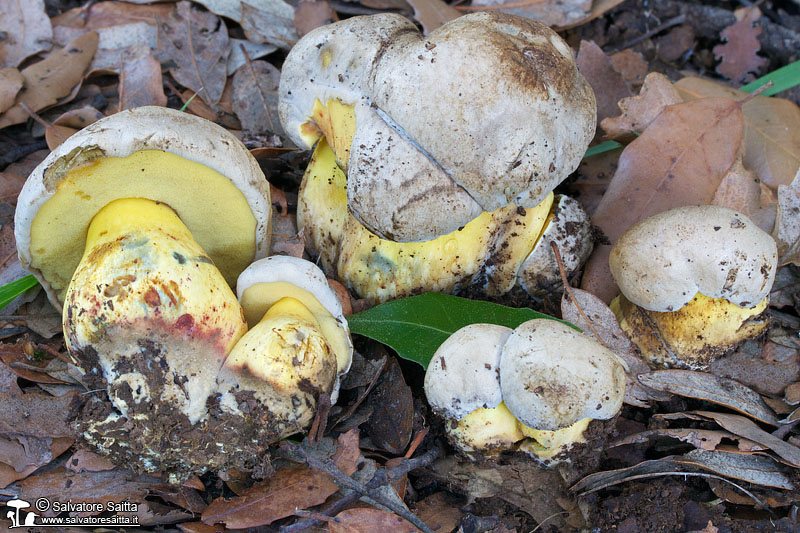Caloboletus radicans (Pers. : Fr.) Vizzini
Boletus radicans Pers. : Fr.
|
Osservazioni sulle raccolte fotografate La raccolta in foto è stata determinata macroscopicamente. La specie è stata ormai inserita in un nuovo genere: Caloboletus. Index Fungorum no. 146 Caloboletus Vizzini, gen.nov. IF550546 Basidiomes stipitate-pileate with tubular hymenophore. Pileus usually pale, whitish to smoke-grey, clay-buff, often with ochraceous/olivaceous tinges, rarely with red tinges, gradually darkening, not turning blue when bruised. Tubes and pores at first lemon-yellow to sulphur-yellow (but pores are orange to red in Caloboletus firmus), then olivaceous, blue when injured. Stipe central, pale yellow to yellow, with or without red tinges, usually reticulated, reticulum sometimes reduced or even absent. Context whitish to pale lemon-yellow, sometimes with red tinges at stipe base, gradually changing to blue when cut. Taste bitter (presence of cyclocalopins), fading with age. Spores boletoid, smooth. Hymenophoral trama bilateral-divergent of the Boletus-subtype. Clamp connections absent. Holotype: Boletus calopus Pers. 1801. Comment: The genus corresponds quite well to the section Calopodes Fr. emend. Lannoy & Estadès of the genus Boletus L. The bitter taste is caused mainly by the presence of cyclocalopins (Hellwig et al., European Journal of Organic Chemistry 2002: 2895-2904). According to the phylogenetic analyses by Binder & Hibbett 2006 (Mycologia 98: 971-981), Gelardi et al. 2013 (Sydowia 65: 45-57), Nuhn et al. 2013 (Fungal Biology 117: 479-511) and Wu et al. 2014 (Fungal Diversity, DOI 10.1007/s13225-014-0283-8) the species of section Calopodes represent a new genus in the Boletaceae. Etymology: caloboletus (the Greek word calos means beautiful, nice) refers to the beautiful red tinges of the stipe typical of many species in the genus. |

| Foto 1 [IMG7921] - TUR-A 216631 Monti Nebrodi, 950m [N2], 30.VIII.2018 Copyright © 2018 Salvatore Saitta |